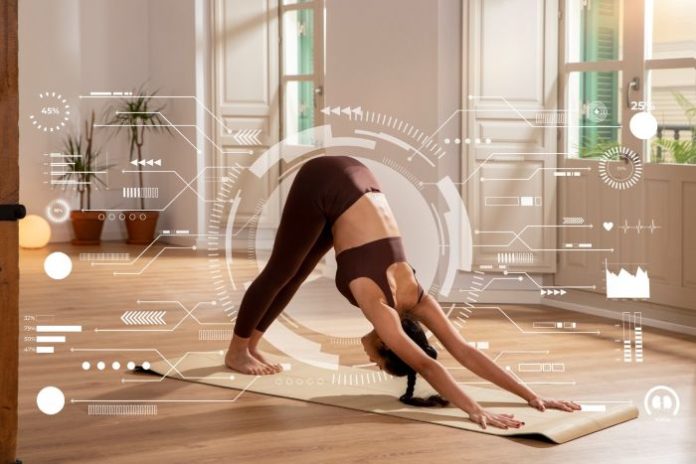Many people move through their day juggling work, family, and personal goals. It’s easy to overlook simple ways to maintain consistent energy and balance. Technology now offers more than entertainment or convenience—it can play a useful role in supporting daily wellness. From fitness trackers to mindfulness apps, digital wellness tools can help people stay organized, maintain healthy routines, and feel more in tune with their habits.
Maintaining a steady rhythm throughout the day doesn’t require complicated plans. It’s about small actions that align with personal goals and lifestyle. With thoughtful use, technology can simplify how we track progress, stay active, and practice mindfulness. The key is learning to use these tools intentionally, so they fit naturally into everyday life rather than adding pressure or distraction.
This article explores simple, practical ways to use wellness technology to maintain daily balance. It focuses on approaches anyone can start today—without needing a full reset or rigid plan.
Key Takeaways
- Technology can support daily wellness through mindful nutrition tracking, movement consistency, and digital wellbeing tools.
- Simple apps can help track nutrition without stressing about calories; they encourage mindfulness and balanced eating habits.
- Wearable devices keep you aware of your movement patterns, promoting gentle consistency in daily activity.
- Digital wellbeing tools help manage screen time and promote work-life balance, creating space for personal activities.
- Online wellness communities and digital journaling foster support, reflection, and accountability for maintaining healthy habits.
Table of contents
Mindful Nutrition Tracking Made Simple
Nutrition plays a key role in overall wellness, and tracking meals has become easier with technology. Simple mobile apps can help you understand your food choices and portion balance. These wellness tools provide visual logs that make it easy to notice patterns in eating habits.
These apps are not about counting every calorie. They encourage mindfulness—helping users see how food choices align with daily energy and focus. Over time, this awareness supports balanced eating habits that fit individual needs.
Some nutrition apps even include gentle reminders to stay consistent with your routine, such as tracking meals or taking health-friendly supplements by brands like USANA Health Sciences. These small features can help maintain regular habits that complement a balanced diet.
You can also find features that share healthy recipe ideas or grocery reminders. Using them helps create a smoother relationship with food without adding stress or restriction.
Use Wearable Devices to Stay Consistent with Movement
Many people spend long hours at desks or screens without realizing how much time passes between moments of movement. Wearable devices, such as smartwatches or activity trackers, can make it easier to stay aware of daily activity patterns. They record steps, time spent moving, and even brief reminders to stand or stretch.
These insights can help people notice when they’re sitting for long periods and encourage simple, steady movement. This doesn’t mean overexercising —it’s about gentle consistency. Small breaks to walk, stretch, or take stairs can make the day feel more balanced. The goal is awareness rather than perfection.
Wearables also let you see your progress over time, which can motivate steady habits without pressure. They serve as quiet partners in helping maintain a healthy rhythm of movement each day.
Manage Work-Life Balance with Digital Wellness Tools
Technology can make life easier, but it can also keep people constantly connected. Many smartphones now include digital wellbeing settings that help manage screen time and encourage more mindful use. Features like app timers, focus modes, and notification controls remind users to pause and step away when needed.
Using these tools helps maintain a natural rhythm between work and rest. Setting boundaries around device use can create more time for personal activities, relaxation, and social connection. For instance, scheduling quiet hours or using “do not disturb” modes during meals or evenings can help you feel more present.
Finding balance doesn’t mean removing technology—it means using it intentionally. Digital wellness tools support that balance by making users aware of how they spend their time online, helping them use technology in ways that feel positive and sustainable.
Use Guided Breathing and Relaxation Apps During Breaks
Taking short breaks throughout the day can help maintain calm and focus. Breathing and relaxation apps make this easy by offering brief guided exercises. These sessions usually last only a few minutes and can fit between meetings or during work pauses.
Breathing exercises can help calm the nervous system by encouraging slower, steadier breathing patterns. Over time, this helps people feel more centered during busy days. Relaxation apps also include nature sounds, light music, or gentle reminders to pause and breathe deeply.
These moments don’t require special preparation. Simply opening an app, following short guidance, and returning to your day can make a noticeable difference in how balanced you feel. The goal isn’t perfection—it’s creating simple habits that support steadiness and mindfulness.
Connect with Online Wellness Communities
Maintaining healthy habits often feels easier with a sense of support. Online wellness communities and virtual fitness or mindfulness groups offer a space for people to share experiences and encouragement.
These communities can include social platforms, group challenges, or live sessions through apps. People often find motivation by setting shared goals or exchanging ideas with others who value similar lifestyles.
Joining such spaces can make personal wellness goals feel more engaging. It also helps people stay consistent through accountability and shared learning. When used mindfully, digital communities foster positive connections rather than distraction, creating a network that supports balanced living.
Reflect and Reset with Digital Journaling
Reflection is a simple but powerful habit. Journaling apps make it easy to capture daily thoughts, intentions, or gratitude entries. Taking a few minutes each day to record reflections encourages mindfulness and awareness.
Digital journaling doesn’t require long writing sessions. It can be as simple as noting what went well during the day or setting a small goal for tomorrow. Some apps also include reminders or prompts that help guide reflection.
This habit helps users stay connected with their choices, emotions, and progress. Over time, it builds perspective and a sense of personal growth. Writing digitally also allows easy organization of entries, making it simple to revisit past reflections whenever you want.
Technology offers countless ways to support everyday wellness when used with intention. From hydration reminders and breathing apps to digital communities and journaling tools, these innovations help people stay consistent with small, meaningful actions.
Maintaining steady energy and focus isn’t about major changes—it’s about creating simple routines that fit naturally into modern life. By using tech wellness tools purposefully, you can support balance, mindfulness, and organization without feeling overwhelmed.
Combining thoughtful technology wellness tools with nourishing food, steady movement, and mindful breaks helps maintain overall wellbeing in a realistic and sustainable way. It’s not about doing more—it’s about making everyday actions count toward a more balanced and fulfilling lifestyle.











